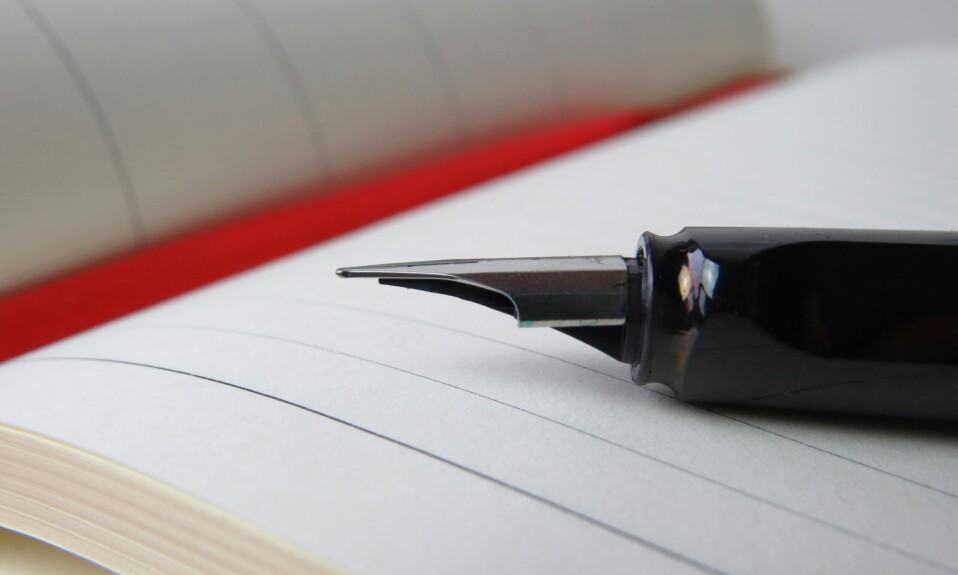What is Pen and Paper Strength?
In our increasingly digital world, the humble pen and paper may seem like relics of the past. However, research has shown that the act of physically writing can offer significant cognitive benefits, a concept known as “pen and paper strength.”
This refers to the unique advantages that arise from using physical writing tools, such as pens and notebooks, compared to relying solely on digital devices for note-taking, brainstorming, and other cognitive tasks.
At its core, pen and paper strength is about harnessing the power of the human brain’s natural affinity for physical manipulation and sensory engagement. When we write by hand, we engage different neural pathways and cognitive processes than when we type on a keyboard or tap on a screen. This deeper level of engagement can lead to improved focus, better information retention, and more effective problem-solving.
By understanding the science behind pen and paper strength and incorporating physical writing tools into our daily routines, we can unlock a level of cognitive performance that may be difficult to achieve in our increasingly digital world.
Read also on: What is Craigslist Olympic Pen? 3 valuable things to know.
The Science Behind Pen and Paper Strength
The cognitive advantages of pen and paper strength are rooted in the way the brain processes information when we physically write. Numerous studies have shown that the act of handwriting activates different regions of the brain compared to typing or digital note-taking.
According to research published in Psychological Science, when we write by hand, we engage the sensorimotor parts of the brain that are responsible for fine motor skills and the integration of visual, motor, and cognitive processing. This deep level of neural engagement can lead to improved information retention and comprehension.
Additionally, a study published in the Journal of Education Psychology found that students who took notes by hand demonstrated better understanding and recall of the material compared to those who typed their notes on a laptop. The researchers suggest that the physical act of writing helps to solidify the information in the brain, leading to more meaningful learning.
The benefits of pen and paper strength extend beyond just note-taking. When it comes to tasks like brainstorming, ideation, and problem-solving, the physical act of writing can stimulate different cognitive pathways that foster creativity and lateral thinking. A study published in Applied Cognitive Psychology found that participants who used pen and paper for creative exercises generated more ideas and exhibited greater flexibility in their thinking compared to those who used a digital device.
Pen and Paper vs. Digital Note-taking
In the modern age, it’s tempting to rely on digital devices for all of our note-taking and information-processing needs. After all, laptops, tablets, and smartphones offer the convenience of instant access, searchability, and the ability to quickly share information.
However, research suggests that this over-reliance on digital tools may come at a cost to our cognitive performance. A study published in the journal Psychological Science found that students who took notes by hand demonstrated better understanding and retention of the material compared to those who typed their notes on a laptop.
The key difference lies in the cognitive engagement required for each method. When we write by hand, we are forced to be more selective and concise in our note-taking, as the physical act of writing is slower and more laborious than typing. This process of actively processing and summarizing the information can lead to deeper learning and better retention.
In contrast, the ease and speed of digital note-taking can sometimes lead to a more passive, verbatim approach, where students simply transcribe information without fully engaging with the material. This can result in a shallow understanding and weaker long-term memory of the content.
Moreover, the ubiquity of digital devices in our lives can introduce a range of distractions that can undermine our focus and concentration during cognitive tasks. The temptation to check social media, respond to notifications, or switch between applications can disrupt our thought processes and hinder our ability to deeply engage with the task at hand.
Read also on: El Paso Trucking Accident Lawyer: Maximizing Your Claim
Practical Tips for Harnessing Pen and Paper Strength
If you’re ready to unlock the power of pen and paper strength, there are several practical strategies you can implement to incorporate physical writing tools into your daily routine:
- Choose the Right Writing Tools: Invest in high-quality pens, pencils, and notebooks that you enjoy using. This can help make the act of writing a more pleasurable and engaging experience.
- Dedicate Time for Pen and Paper Tasks: Set aside specific periods of your day or week for tasks that benefit from the cognitive advantages of pen and paper, such as brainstorming, outlining, or problem-solving.
- Experiment with Different Techniques: Try out various note-taking strategies, such as mind mapping, the Cornell method, or the Bullet Journal system, to find the approach that works best for your learning style and cognitive needs.
- Minimize Digital Distractions: When engaging in pen and paper tasks, make a conscious effort to minimize or eliminate digital distractions, such as by turning off your phone or closing unnecessary applications on your computer.
- Integrate Pen and Paper with Digital Tools: While pen and paper offer unique cognitive advantages, they can also be effectively integrated with digital tools. For example, you can use a dedicated note-taking app to digitize your handwritten notes or sketches.
- Embrace the Tactile Experience: Savor the sensory experience of writing by hand, from the feel of the pen gliding across the paper to the satisfying sound of the nib scratching against the surface. This physical engagement can deepen your connection to the task at hand.
By incorporating these strategies into your daily routine, you can harness the power of pen and paper strength and unlock new levels of cognitive performance, creativity, and productivity.
Real-World Examples of Pen and Paper Strength
The cognitive benefits of pen and paper strength are not just theoretical – they’ve been observed in real-world settings across a variety of professions and disciplines.
Take the case of Emily, a marketing strategist who swears by her pen and paper approach to brainstorming and ideation. “When I’m working on a new campaign, I always start with a blank notebook and a collection of pens,” she says. “The physical act of writing helps me tap into a different part of my brain, allowing me to generate more creative and innovative ideas.”
Emily’s experience is echoed by many successful professionals, from writers and artists to scientists and engineers. Dr. Michael Chen, a renowned neurosurgeon, attributes much of his problem-solving prowess to the use of pen and paper. “When I’m working through a complex surgical case, I find that sketching out diagrams and taking handwritten notes helps me better visualize the anatomy and devise innovative solutions,” he explains.
In the academic realm, studies have shown that students who use pen and paper for note-taking and exam preparation often outperform their digitally-inclined peers. Julia, a college student, shares her perspective: “I know it might be more efficient to type my notes, but I find that the process of writing them out by hand helps me better retain and understand the material. It’s like my brain is more engaged with the information.”
These real-world examples highlight the power of pen and paper strength across a wide range of applications, from creative problem-solving to academic performance. By embracing the cognitive advantages of physical writing tools, individuals in diverse fields are unlocking new levels of productivity, creativity, and cognitive prowess.
Overcoming the Digital Distraction Dilemma
As the digital revolution has transformed nearly every aspect of our lives, it’s understandable that many of us have become heavily reliant on technology for our cognitive and productivity needs. From laptops and smartphones to tablets and smartpens, the array of digital tools at our disposal can be both a blessing and a curse.
While these digital devices offer undeniable convenience and efficiency, they also present a significant challenge in the form of constant distractions. The temptation to check social media, respond to notifications, or switch between multiple applications can disrupt our focus and hinder our ability to engage deeply with the task at hand.
This “digital distraction dilemma” poses a significant threat to the cognitive advantages of pen and paper strength. When we’re constantly bombarded by digital stimuli, it can be challenging to maintain the level of focus and engagement required to fully harness the benefits of physical writing tools.
To overcome this challenge, it’s essential to strike a healthy balance between the use of digital and physical tools. This may involve:
- Designating “Pen and Paper Time”: Set aside specific periods of the day or week when you will exclusively use pen and paper for cognitive tasks, free from digital distractions.
- Implementing Digital Boundaries: Utilize productivity apps, browser extensions, or even physical barriers (like closing your laptop) to minimize the temptation of digital distractions during your pen and paper sessions.
- Integrating Digital and Physical Workflows: Explore ways to seamlessly integrate your pen and paper notes and ideas with digital tools, such as using a dedicated note-taking app or converting your handwritten work into digital files.
- Fostering Self-Awareness: Be mindful of your own tendencies and triggers when it comes to digital distractions, and develop strategies to maintain focus and discipline during your pen and paper tasks.
By striking this balance and proactively managing the digital distractions in our lives, we can unlock the full cognitive potential of pen and paper strength and harness its benefits in our personal and professional endeavors.
The Enduring Power of Pen and Paper
In an age dominated by digital technology, the humble pen and paper may seem like relics of the past. However, the cognitive advantages of “pen and paper strength” have been well-documented, and they continue to offer a powerful tool for unlocking our full intellectual and creative potential.
By understanding the science behind the cognitive benefits of physical writing, and by incorporating practical strategies for harnessing the power of pen and paper, we can break free from the digital distraction dilemma and tap into a deeper level of focus, memory, and problem-solving.
Whether you’re a student looking to improve your academic performance, a professional seeking to enhance your creativity and productivity, or simply someone who wants to engage more deeply with the world around you, embracing the power of pen and paper can be a transformative experience.
So, why not pick up a pen and a notebook and unlock the full cognitive strength that lies within? The possibilities are endless when you harness the enduring power of this timeless tool.









